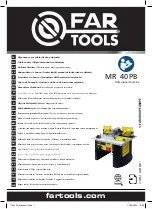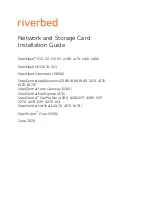
7.5.2. IPsec
IPsec is a protocol suite for securing IP communications by authenticating and encrypting each packet
of a communication session and thus establishing a secure virtual private network.
IPsec includes various cryptographic protocols and ciphers for key exchange and data encryption and
can be seen as one of the strongest VPN technologies in terms of security.
It uses the following mechanisms:
AH
Authentication Headers (AH) provide connectionless integrity and data origin authentication for
IP datagrams and ensure protection against replay attacks.
ESP Encapsulating Security Payloads (ESP) provide confidentiality, data-origin authentication, con-
nectionless integrity, an anti-replay service and limited traffic-flow confidentiality.
SA
Security Associations (SA) provide a secure channel and a bundle of algorithms that provide the
parameters necessary to operate the AH and/or ESP operations. The Internet Security Association
Key Management Protocol (ISAKMP) provides a framework for authenticated key exchange.
Negotiating keys for encryption and authentication is generally done by the Internet Key Exchange
protocol (IKE) which consists of two phases:
IKE phase 1
IKE authenticates the peer during this phase for setting up an ISAKMP secure asso-
ciation. This can be carried out by either using main or aggressive mode. The main
mode approach utilizes the Diffie-Hellman key exchange and authentication is always
encrypted with the negotiated key. The aggressive mode just uses hashes of the pre-
shared key and therefore represents a lesssecure mechanism which should generally
be avoided as it is prone to dictionary attacks.
IKE phase 2
IKE finally negotiates IPSec SA parameters and keys and sets up matching IPSec
SAs in the peers which is required for AH/ESP later on.
Administration
IPsec administrative status:
Enable or disable IPsec
Propose NAT Traversal:
NAT-Traversal is mainly used for connections which traverse a path
where a router modifies the IP address/port of packets. It encapsu-
lates packets in UDP and therefore requires a slight overhead which
has to be taken into account when running over smallsized MTU
interfaces.
91
© RACOM s.r.o. – MG102iGPRS/UMTS/HSPA+/LTE router
Web Configuration
Summary of Contents for MG102i
Page 2: ......
Page 147: ...147 RACOM s r o MG102iGPRS UMTS HSPA LTE router Web Configuration...
Page 174: ...174...
















































